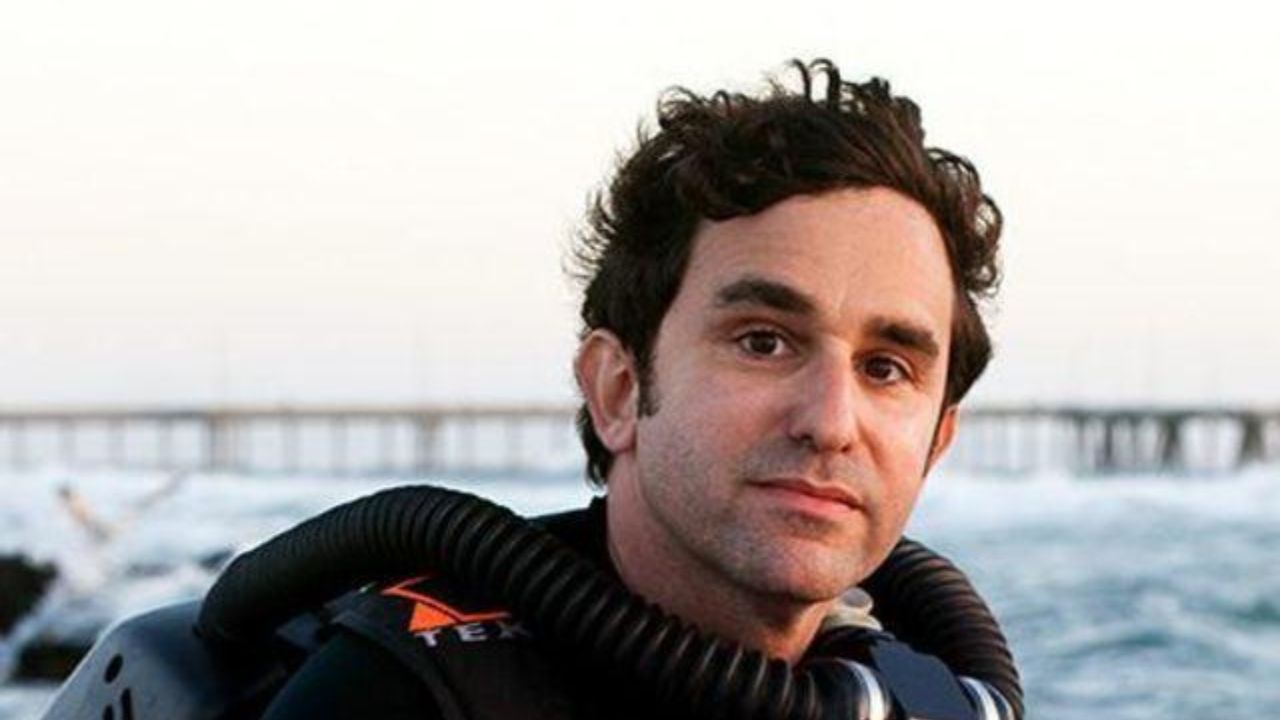
David Gruber is a leading marine biologist, a National Geographic Explorer, and a Distinguished Professor at Baruch College, City University of New York. He has discovered over 180 new biofluorescent fish species, led groundbreaking studies on fluorescence in sea turtles, and founded Project CETI, a nonprofit aiming to translate sperm whale communication. Over his 20-year career, he has built diversified income streams—academic salary, research grants, media appearances, speaking engagements, consulting, and nonprofit fundraising—and his net worth is estimated at $2 million.
Contents
Early Life
David Gruber was born in Paterson, New Jersey and grew up fascinated by the ocean.
He earned a B.S. from the University of Rhode Island, an M.S. in Journalism from Columbia University, a Master of Environmental Management from Duke University, and a Ph.D. in Biological Oceanography from Rutgers University.
He completed post-doctoral work in Molecular Psychiatry at Brown University before joining Baruch College.
Career Highlights
Biofluorescence Discoveries
In 2014, Gruber co-discovered over 180 new biofluorescent fish species, reshaping our understanding of marine communication.
In 2015, he documented the first known fluorescence in Hawksbill sea turtles, marking a milestone for reptile biology.
TED Talks & Media
His 2016 TED Talk “Glow-in-the-dark sharks and other stunning sea creatures” has amassed 26 million views, bringing marine science to a global audience.
His follow-up talk “Can we learn to talk to sperm whales?” has been viewed over 2.5 million times.
He has appeared on Ocean Mysteries, OceanX, and various documentaries.
Project CETI
Gruber founded Project CETI (Cetacean Translation Initiative) to listen to and translate sperm whale vocalizations using AI, acoustics, and robotics.
Since 2020, Project CETI has secured multimillion-dollar grants and partnerships to build large-scale acoustic and behavioral data sets.
How David Gruber Makes Money
-
Academic Salary
Baruch College Distinguished Professors typically earn between $140,000–$190,000 per year, reflecting their senior status and research leadership. -
Research Grants & Fellowships
He receives Explorer grants from National Geographic, a Radcliffe Fellowship at Harvard (2017–2018), and support from institutes like the John B. Pierce Laboratory. -
Media Projects
Fees from TV appearances, documentaries, and video platforms add tens of thousands annually. His high-view TED Talks translate to higher speaking rates. -
Public Speaking & Consulting
He speaks at conferences, universities, and corporate events.
Consulting collaborations—such as with the Harvard Microrobotics Lab—yield licensing fees for his soft-robot inventions. -
Nonprofit Fundraising
As President of Project CETI, he oversees fundraising campaigns that support whale-language research, including corporate sponsorships and philanthropic grants.
Net Worth Estimate
According to recent estimates, Gruber’s net worth is $2 million, accumulated through his diversified career in academia, research, media, and philanthropy.
Over 20 years, his annual earnings (salary + grants + media + speaking + consulting) have totaled approximately $250,000–$350,000, consistent with his current net worth.
Notable Projects & Impact
-
180+ biofluorescent species discovered since 2014.
-
First sea turtle fluorescence documented in 2015.
-
Co-development of gentle underwater robots for minimally invasive marine research.
-
Launch of Project CETI, pioneering AI-driven interspecies communication.
Lifestyle & Investments
Gruber leads a modest lifestyle, reinvesting earnings into:
-
Laboratory technology and robotics for ocean research.
-
Field expeditions to remote marine habitats.
-
Professional development for his research team.
He holds minimal personal real estate or luxury assets, focusing on advancing science over material accumulation.
FAQs
Q1: What is David Gruber’s net worth?
A1: His net worth is estimated at $2 million.
Q2: How does he earn his income?
A2: Through his professor salary, National Geographic grants, TV/documentary fees, speaking engagements, consulting, and Project CETI fundraising.
Q3: What is Project CETI?
A3: A nonprofit initiative to translate sperm whale communication using AI, acoustics, and robotics.
Q4: How many species has Gruber discovered?
A4: Over 180 new biofluorescent fish species since 2014.
Q5: How many views do his TED Talks have?
A5: His fluorescence talk has 26 million views, and his whale-talk talk has 2.5 million.
Q6: What awards has he received?
A6: He is a Lagrange Prize recipient and a Radcliffe Fellow at Harvard.
Q7: Where is he based?
A7: He splits time between New York City (Baruch College) and field sites worldwide.
Q8: Does he hold patents?
A8: He co-developed and licenses soft-robotic tools for marine research.
Q9: What is his academic rank?
A9: He is a Distinguished Professor of Biology and Environmental Sciences at Baruch College.
Q10: How can I support Project CETI?
A10: Donations and sponsorships can be made through Project CETI to fund whale-language studies.

